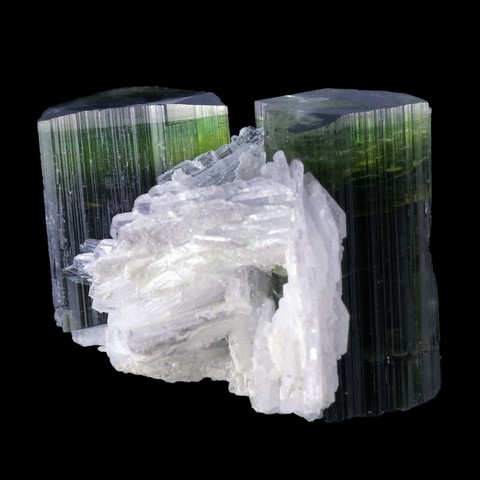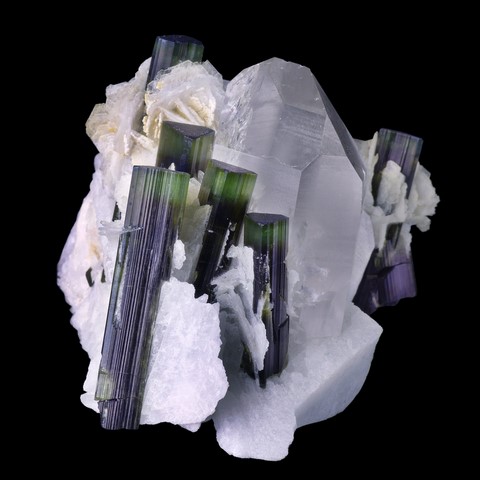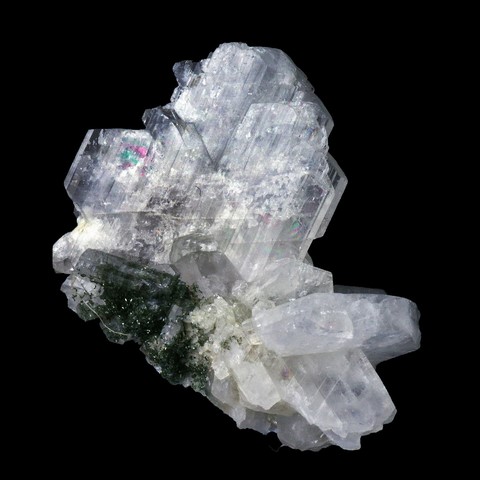ALBITE
Class : Silicates
Subclass : Tectosilicates
Crystal System : Triclinic
Chemistry : NaAlSi3O8
Rarity : Very common
Albite is the sodic term for plagioclase feldspars, a major subgroup of silicates ranging from albite (sodium) to anorthite (calcium). Its name comes from the Latin albus (white) in reference to its color. It can also sometimes be gray with greenish or bluish reflections, more rarely reddish. It usually accompanies quartz, micas, orthoclase or microcline, oligoclase, and many other minerals. Albite is one of the essential constituents of granites and pegmatites associated with them, but also of diorites and nepheline syenites (of which it is the only feldspar). It is also abundant in metamorphic rocks of low pressure and low temperature (greenschist facies), it is common in alpine clefts, and frequent in hydrothermal alteration zones of metalliferous deposits : it is one of the minerals most abundant in the earth's crust. Well-formed single crystals are relatively rare. Its habitus is generally tabular, sometimes elongated with very widespread polysynthetic twins ; it often constitutes, especially in pegmatites, aggregates of lamellar crystals known under the name of cleavelandite. Albite is sometimes used in the ceramic and porcelain industry, it can also be cut for jewelry.




Albite in the World
Twinning
The twins are common around [010] or perpendicular to {010}, giving polysynthetic streaks on {001} or {010} ; many other single and multiple contact twins.
Fakes and treatments
No fake reported for this mineral species.
Hardness : 6 to 6.5
Density : 2.6
Fracture : Irregular to conchoidal
Trace : White
TP : Translucent to transparent
RI : 1.528 to 1.542
Birefringence : 0.010
Optical character : Biaxial +
Pleochroism : None
Fluorescence : Yellow to red
Solubility : Hydrofluoric acid
Magnetism : None
Radioactivity : None

